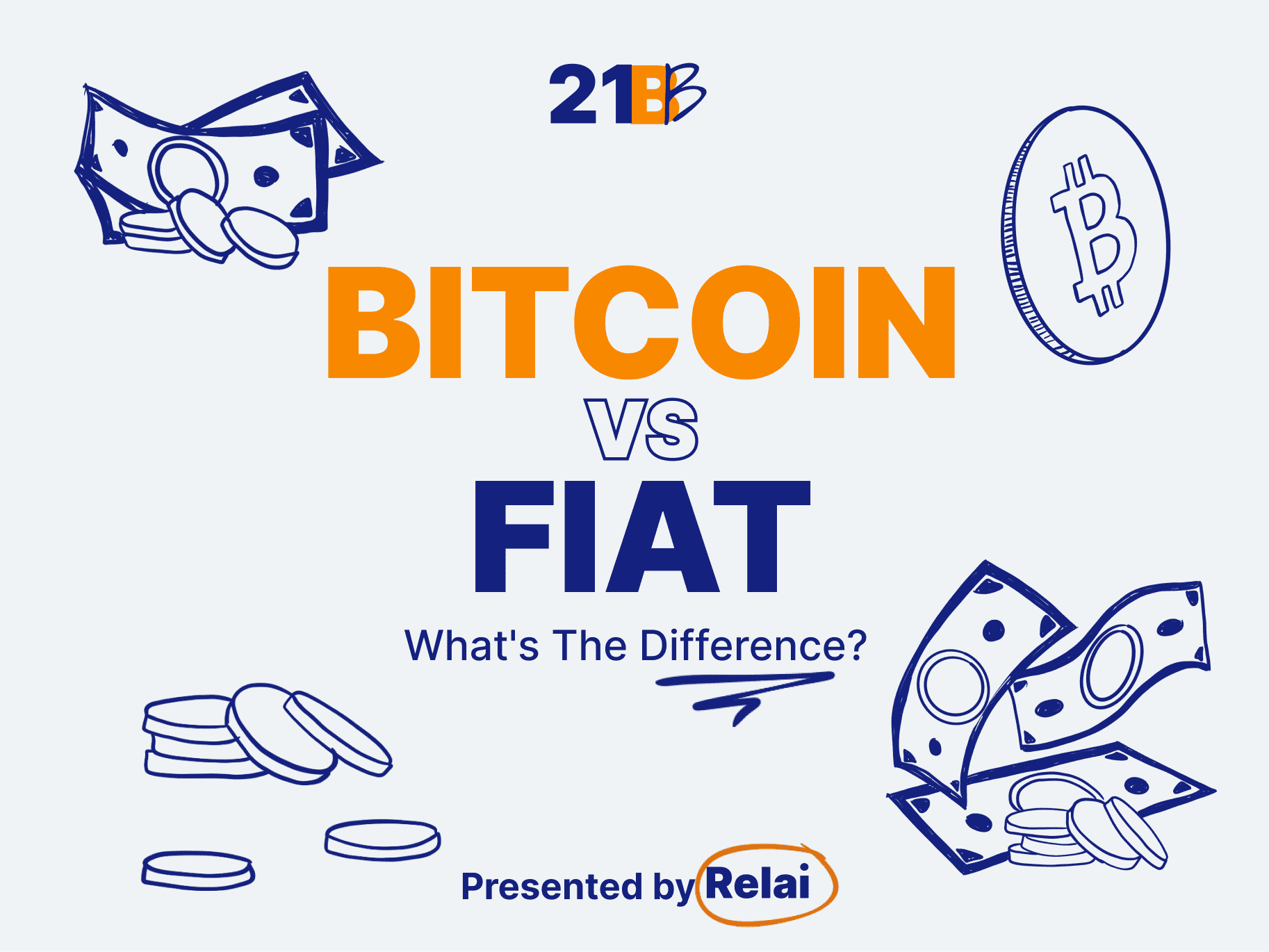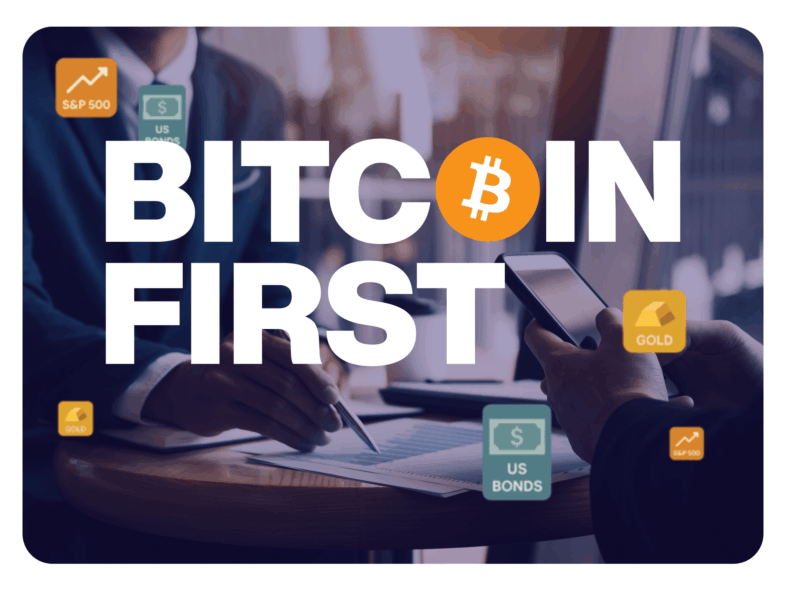In this lesson of our 21 Bitcoin Basics, you will learn the difference between Bitcoin and fiat currencies like the Euro or the US Dollar.
Historically, gold (and silver) turned out to be the preferred material for wealth preservation and as a means of exchange, usually as coins even up until the second half of the 20th-century currencies were backed by gold. After the Second World War, politicians decided that the US Dollar should have a fixed exchange rate with gold and all other currencies oriented themselves on the US Dollar – effectively putting the whole world on a “Gold Standard”.
This changed in 1971 when US president Richard Nixon ended this agreement. Since then, all official currencies in the world have been fiat currencies. They are defined as government-issued money that is “backed” not by gold but the faith in the government issuing it. Thus the Latin word “fiat” translates to “let it be done.”
Many people criticize fiat currencies for being prone to abuse by governments and irresponsible central banks. Bitcoin is the exact opposite of this: No government or company is in control, and the rules are coded in the software. The supply is limited to 21 million, which makes it similar to gold while allowing it to transact globally 24/7.
What is Fiat Currency?
Fiat currency is government-issued money that is not backed by gold. Instead, fiat currency is “backed” by faith in the issuing government.
Fiat currency appears as paper bills, coins, or digitally in your bank account. The term fiat is derived from the Latin language and means “let it be done.” Other terms for fiat currency are fiat money, national currency, or sovereign currency.
Once upon a time, before the end of the Bretton-Woods Agreement, the world’s reserve currency, the US dollar, was backed by gold. However, that ended in 1971 when the dollar went off the Gold Standard, and the Federal Reserve was put in charge of managing the nation’s currency. What followed was inflation, leading to the gradual devaluation of the US dollar in real terms.
Examples of some of the most commonly used fiat currencies include the US dollar, the euro, and the Swiss franc.
What is Bitcoin?
Bitcoin is an open monetary network that allows anyone with an internet connection to store, send, and receive money in digital form.
As the world’s first cryptocurrency, bitcoin uses a combination of economic incentives, complex cryptography, a mathematically proven limited coin supply, and a hard-coded disinflationary monetary policy to create what its advocates often call “money 2.0.”
In simple terms, bitcoin is money for the Internet.
How is Bitcoin Different from Fiat Currency?
Although bitcoin and fiat currency have similarities, they are also significant differences.
Both currencies aren’t backed by commodities such as silver or gold. Additionally, both currencies are divisible. Just like a dollar can be divided into 100 cents, one bitcoin can be divided into 100 million satoshis. What’s more, both types of money can be used to send and receive payments.
Despite the similarities, bitcoin and fiat currency aren’t the same.
To begin with, bitcoin – unlike fiat currency – is not issued by any government or financial institution. It’s a decentralized digital currency, which means there is no central authority that controls the monetary policy. Additionally, bitcoin does not require any authorization from a financial intermediary, such as a bank, to validate and process transactions. Bitcoin transactions are verified by participants in the Bitcoin network and publicly recorded on the Bitcoin blockchain.
What’s more, bitcoin has a fixed maximum supply of 21 million coins and a hard-coded disinflationary monetary policy. Finally, all bitcoin transactions are irreversible, making them an excellent means for payment in commerce.
Why Do Bitcoin Advocates Consider Bitcoin “Better Money”?
Bitcoin advocates consider bitcoin to be superior to fiat currency for a number of reasons.
Firstly, bitcoin cannot be controlled or manipulated by governments or central banks. Unlike its fiat currency counterpart, central banks do not have the power to buy and sell their nation’s currency to weaken or strengthen their currency at will.
Secondly, bitcoin has a mathematically proven limited supply, which means that no one can “print” more bitcoin to put pressure on the value of the currency. Unlike fiat currency, which is typically inflationary, bitcoin has a hard-coded disinflationary monetary policy.
Thirdly, bitcoin is accessible to anyone with an internet connection regardless of whether they can provide identification documents or not. Setting up a bank account or using mobile money typically requires users to set up accounts using government-issued IDs. For many in the world, that is simply not an option.
Fourthly, bitcoin can be sent across borders within minutes and at a relatively low fee without the need for costly intermediaries, such as banks or money transfer operators.
Finally, bitcoin transactions are irreversible, which eliminates the chance of chargeback fraud, which costs businesses billions each year.
Bitcoin is money 2.0 and is on the fast track to becoming the Internet’s money.
Takeaways:
- Gold (and silver) used to be the historical winners as mediums of exchange.
- Since 1971 every official currency in the world has been a “fiat currency,” meaning it is not backed by anything and can be “printed” at will.
- Bitcoin is the direct opposite: No government is in control, it’s limited, and anyone in the world 24/7 can use it.
Disclaimer: Relai services are exclusively recommended for Swiss and Italian residents. None of this content constitutes investment advice. Always conduct your own research before investing in any digital asset.





